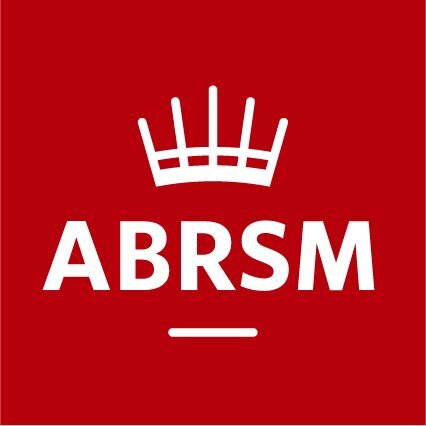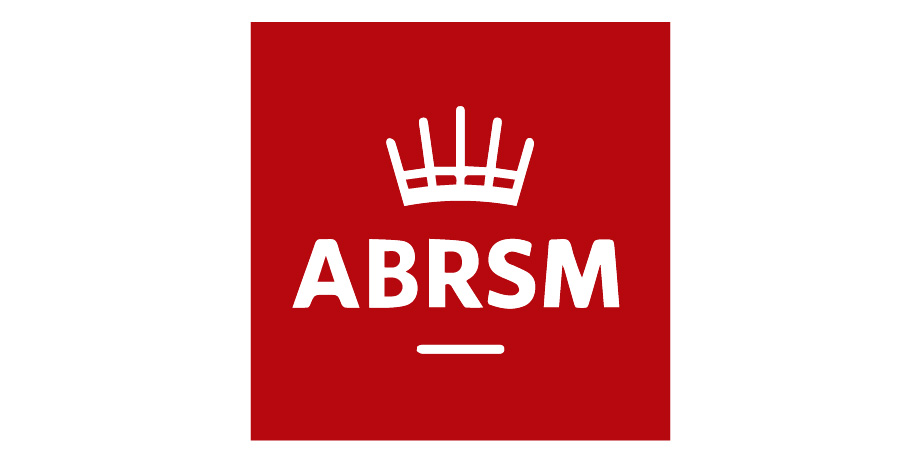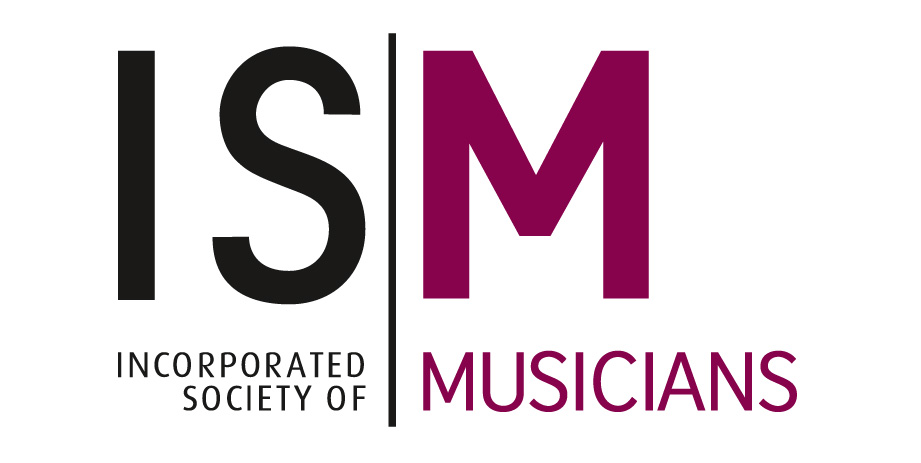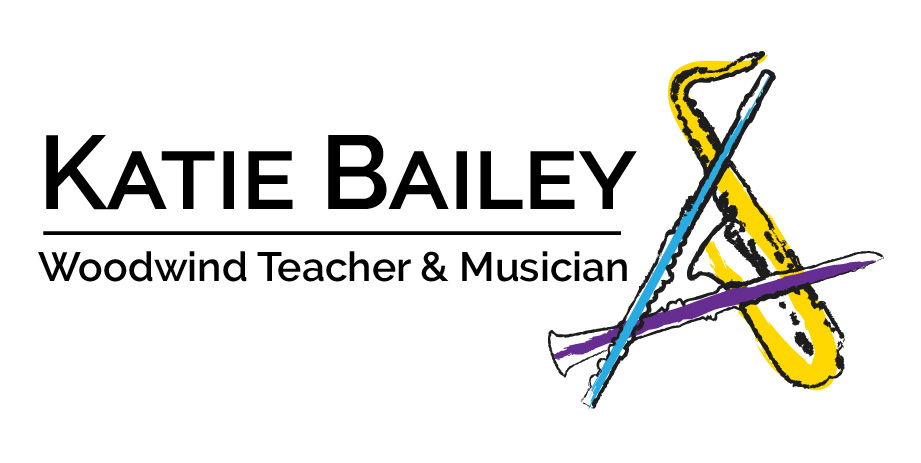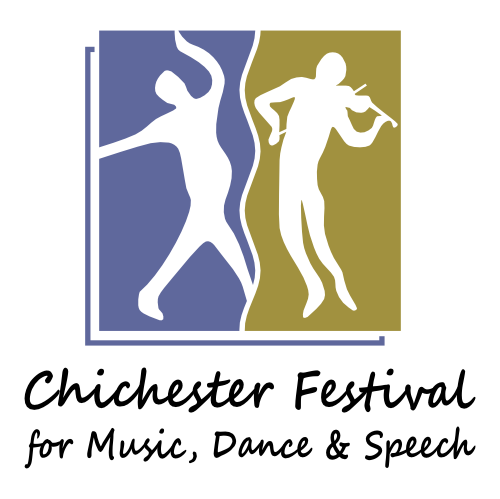In comparing the two, I shall be considering the following: publications, pieces, technical requirements, supporting tests and overall cohesion. But before we dive into the exams themselves, let’s take a look at the differing mark schemes:
Here are a few observations from the allotment of marks by each board:
ABRSM exams are marked out of 150, whereas TCL exams are marked out of 100. In my opinion, marking out of 150 allows for greater nuance in providing feedback to candidates.
TCL’s syllabus is weighted slightly more in favour of the three pieces; together they are allocated 66% of the available marks, compared to ABRSM’s pieces allocated 60% of the available marks. This is worth bearing mind for candidates that favour a more performance-heavy approach.
The two supporting tests are given separate weightings in ABRSM exams. Together they account for 28% of the allocated marks, compared with 21% in TCL exams.
The “Scales & Technical Work” portion of the exam has the same weighting from both boards; however, students sitting TCL exams must also prepare three short study pieces for this section.
It is possible to obtain a pass in a TCL exam on pieces alone; I feel this somewhat undermines the validity of the technical requirements and supporting tests (though I have never heard of a student scoring 0 in any category).
While it is easier to obtain a pass and a merit in TCL exams, it is slightly harder to obtain a distinction.
Part 1: Exam Publications
Publications: ABRSM
This year ABRSM have accompanied their usual Exam Pieces books with a revised edition of Piano Scales & Arpeggios for each grade. This is in conjunction with the new requirements for this portion of the exam.
The Not-So-Good: There is considerbaly less content in many of the books compared to previous years, particularly in the Grade 8 Exam Pieces book and the revised scale books.
The ABRSM books follow the trend set by previous Exam Pieces books, with an updated colour scheme and cover photo. As usual, performance notes are included for all the pieces in each book.
Each Exam Pieces book contains 3 pieces from each list, 9 in total. Considering that the syllabus has been expanded from 6 pieces per list to 10, it is somewhat disappointing not to see some of the extra pieces represented in the flagship Exam Pieces publications. In the case of the Grade 8 book, List C only contains 3 pieces instead of the usual 6. In spite of the reduction in content, it retails for the same price as previous Grade 8 books.
The Teaching Notes publication, available separately, contains notes only on the 9 pieces published in each main ABRSM publication. The usual notes on the alternative pieces in each list are conspicuous by their absence, leaving the Teaching Notes book significantly thinner than it has been in previous years.
This same is also true of the revised scale books. Due to the reduced requirements for the scales and arpeggios, the accompanying Piano Scales & Arpeggios publications are also considerably thinner. Like the Grade 8 Exam Pieces book, this has not affected the retail price, which remains the same…
Publications: TCL
Just like ABRSM, Trinity has opted to support their usual offering with additional publications. These come in the form of so-called “extended editions” of the Exam Pieces and Exercises books.
The Not-So-Good: The Extended Edition versions offer poor value for a book nearly double the price of the original volume.
The TCL Exam Pieces and Exercises books follow the updated design of the 2018-2020 syllabus, replacing the picture of piano keys with one of the hammers instead. The standard editions of these books feature 12 pieces, a welcome increase from the 9 pieces featured in previous years. Also included are the technical exercises.
TCL has also released an Extended Edition of their Exam Pieces and Exercises for each grade. Initially, I thought the extended editions would be an effective way to present the alternative pieces - there are a total of 35 pieces per grade this year. However, it turns out that the extra pieces are not printed; they are included as a downloadable eBook. Given that the Extended Edition is nearly double the price of the standard exam book, I feel it a frugal decision on TCL’s part not to print the additional pieces. Additionally, the extra pieces included in the extended books are mostly pieces from the 2018-2020 syllabus. This is disappointing, I would have expected more representation from the 14 other alternative pieces that haven’t previously appeared in Exam Pieces and Exercises.
On the plus side, instead of selling a dedicated scale book for each grade, TCL has just two scale books available; one for Grades 1-5 and one for Grades 6-8. I have always felt that individually graded scale books are both unnecessary and offer poor value, and while I would still recommend a comprehensive manual of all scales and arpeggios (ABRSM publish an excellent one), the TCL books are a worthy investment for students working up through the grades.
Winner: Trinity College London
Overall, I feel that TCL’s publications offer more choice for candidates sitting exams, as well as better value for whoever has the happy job of paying for the books! That said, I would stay clear of the extended editions; for nearly double the price of a standard edition of Exam Pieces and Exercises they don't offer much extra in the way of meaningful content.Part 2: Piece selection and benchmarking
Pieces: ABRSM
The 2019-2020 syllabus was an absolute triumph; the chosen pieces were appealing to play, well-benchmarked and from a variety of composers. Does the 2021-2022 syllabus continue this trend?
The Not-So-Good: The revised list structure has weakened what was previously one of the core pillars of ABRSM exams. The benchmarking within the grades is more varied than in previous years, and in many cases is easier than other exam boards.
Exam boards are good at championing music from forgotten people and places, preferring to leave the classical hits for students to study in their spare time. I agree with this approach; it is important to present students with music that they may not necessarily come across on their own and I am often pleasantly surprised by the quality of some of the music that has been dragged out of history. However, there are always pieces that have been forgotten for a good reason, and ought to have stayed that way.
ABRSM have introduced a pre-Grade 1 test called an Initial Grade, to match Trinity’s established offering. It is an easy entry point into music exams for new players.
“While the enduringly popular yet long-snubbed music Einaudi is finally included in this syllabus, the music of Scott Joplin is once again notable by its absence.”
For the first time, ABRSM has included duets in the lower grades. This is a welcome development; duets are terrific at fostering a keen sense of ensemble in young musicians. Unfortunately, all the duets have been confined to the lists of alternative pieces, not one of them appears in the flagship Exam Pieces book.
This is an issue across the whole syllabus: while the number of pieces per list has been expanded from 6 to 10, the decision to publish just 3 of each in Exam Pieces makes me wonder why they have chosen to include more pieces. The pieces from the alternative lists are so rarely chosen by candidates that I wonder if the extra pieces were simply chosen to represent composers from a more diverse background - something which should be done in the main publications themselves. While the enduringly popular yet long-snubbed music Einaudi is finally included in this syllabus, the music of Scott Joplin is once again notable by its absence.
However, the biggest problem with the new selections is not the pieces themselves, but the revised list structure. Where previously, pieces were grouped according to when they were written, now ABRSM has defined the following characteristics for pieces in each list:
List A: pieces are generally faster moving and require technical agility.
List B: pieces are more lyrical and invite expressive playing.
List C: pieces reflect a wide variety of musical traditions, styles and characters.
The previous groupings meant that students sitting ABRSM exams had to be able to play in a range of styles spanning several hundred years. Now, it is possible to make your way through the grades choosing only pieces that offer immediate gratification; with the option to omit the technically intricate music of the Baroque period, fiddly Classical pieces, virtuosic Romantic works or the dissonance of 20th Century music. Students should be assessed on each of these at least once between Grade 1-5, however, it is now entirely possible for pianists to stick to their favourites.
“Traditionally, a Grade 8 student must prepare a piece of Baroque counterpoint, a Classical sonata and a “free choice” piece from the Romantic period or later. Regrettably, the new list structure renders this combination of pieces impossible.”
This has also had a knock-on effect on the Grade 8 pieces. Traditionally, a Grade 8 student must prepare a piece of Baroque counterpoint, a Classical sonata and a “free choice” piece from the Romantic period or later. While I like that it is no longer compulsory to stick to this format, it is regretful that the new list structure renders this combination impossible, as all of the Baroque and Classical pieces are allocated to List A.
Pieces: TCL
Previous Trinity syllabuses have suffered from inconsistent bechmarking and repertoire choices that favoured accessibility over excellence. Has the expanded piece lists rectified these longstanding issues?
The Not-So-Good: The Initial Grade presents some pieces that beginners may find difficult. The inclusion of pieces from the previous syllabus carries over longstanding faults.
“Trinity has put considerable effort into evening out the benchmarking that marred their previous efforts.”
Having played through the selections presented in Exam Pieces and Exercises, it is clear to me that TCL has put considerable effort into an evening out the benchmarking that marred their previous efforts. Not only are the pieces in each book appropriately levelled, but they are also a joy to play! My one complaint is that the pieces selected for the Initial Grade are harder than I would have liked for an entry-level exam.
The option to play pieces from the previous syllabus gives candidates more choice than any other syllabus, but is more choice better? The twelve pieces in the standard edition of Exam Pieces and Exercises provide plenty of high-quality pieces to choose from. This also means that anomalies with the previous syllabus have been “inherited” by the new one - for instance, the inclusion of Mendelssohn’s Kinderstücke in the alternative list for Grade 7, even though it is widely regarded as a Grade 5 piece.
Unlike ABRSM, TCL did not have a formal list structure for Grades 1-5 in their previous syllabus. For the reasons mentioned above, I have always preferred chronologically grouped lists in graded exams, and this has swayed me against using TCL in past years. However, now that ABRSM has abandoned their proven list format, my preference has become obsolete.
The advantage of TCL’s approach over that of ABRSM is that without being bound by any kind of lists, it is easier to build a coherent programme. Rather than redefining their lists, ABRSM would have done better to abolish them altogether to offer the flexibility available with TCL. It is possible with both to eschew certain musical styles and periods, so it is really up to teachers now to make sure that their students choose well-balanced programmes.
From Grades 6-8, TCL implements a two-list structure where at least one of the three chosen pieces must be from each list. I have to say that I am a big fan of this idea; it offers the flexibility to build a varied programme while also not allowing important musical styles to be left by the wayside. It must be said that while ABRSM has made a traditional Grade 8 programme impossible (Baroque counterpoint, Classical sonata and a “free choice” virtuoso piece), students who favour this combination may still choose it.
“It has now become possible with both exam boards for students to eschew certain musical styles and periods, so it is really up to teachers now to make sure that their students choose well-balanced programmes.”
Duets have been a part of TCL’s piano exams for some time, and they make a welcome return here. It is encouraging that at least one duet is included in the flagship Exam Pieces and Exercises at each grade where it is an option (like ABRSM, duets are only included up to Grade 3). Students may also perform their own compositions as a substitute for once piece, a choice which I feel is an admirable inclusion.
Winner: Trinity College London
Trinity's history of inconsistent bechmarking and their free-choice approach has always deterred me from entering students for their exams - particularly when the performance is given a higher weighting in the mark scheme compared to ABRSM. However, with ABRSM abandoning their traditional list structure I must concede that TCL's approach is now the better one.This is not simply a case of TCL being the lesser of two bad options; there is much in their syllabus that is to be applauded and I think many students will enjoy working their way through it.
Sadly for ABRSM, the muddled list structure is not the only problem with the new syllabus. The benchmarking - once widely hailed as the "gold standard" of music exams - falls surprisngly short. It seems now that ABRSM have become the "soft option".
A Note on Diversity and Tokenism in Exam Syllabuses
I mentioned above how important it is for exam boards to choose music that students would not otherwise discover on their own. Even with 12 extra pieces per grade, ABRSM have this year failed to present pieces from a diverse selection of composers, with a particular ommitance of BAME composers (in light of recent events, ABRSM pulled the Grade 1 syllabus at the last minute so as to add one such composer).It may appear that the deliberate inclusion of ethnic and female composers is tokenism, when it just so happens that in the history of Western Classical music, much of what has been written has been done so by white European males. This would indeed be tokenism if we were having to scrape the very bottom of the barrel, however, this is simply not the case. There is a wealth of music by BAME composers that is entirely absent from the new syllabus.
Tokenism is to include something without merit for its own sake. However, when this large and rich body of music is repeatedy absent from exam syllabuses it is nothing short of exclusionary. For further reading, here is an article on ABRSM's colonial roots: https://www.theguardian.com/world/2020/jul/15/uk-royal-schools-of-music-exam-board-urged-to-address-colonial-legacy
Part 3: Scales, Arpeggios & Technical Requirements
Scales: ABRSM
ABRSM promised a big shake-up of their scales and arpeggios for 2021. They have certainly reduced the staggering number of scales previously required, which will be a relief to some, though it comes at a cost.
The Not-So-Good: While the revised list has trimmed the extensive requirements down into a manageble load, so too has it removed some of the most essential componenets, such as broken chords. Furthermore, the new requirements aren't cohesive with the rest of the syllabus.
“There exists no longer a point at which every scale and arpeggio is assessed simultaneously. Is it right that students who skip certain grades will never be assessed on an alarming number of scales and arpeggios?”
Since 2017, ABRSM has promised a comprehensive update for their scales requirements. It was first earmarked for the 2019-2020 syllabus before the consultation period was extended following mixed feedback. Having participated in the feedback process last year, I was somewhat surprised when the final published revisions were identical to those proposed for the 2019-2020 syllabus.
The resulting changes certainly reduce the number of scales candidates must learn for each grade, particularly beyond Grade 5. This will be welcome to many; students can be easily overwhelmed by the sheer volume of scales and arpeggios at the higher levels (Grade 8 previously had an excess of 120 patterns to learn).
There is of course a trade-off; while there is less repetition between grades, now there exists no longer a point at which every scale and arpeggio is assessed simultaneously. This was an essential check on a student’s accrued knowledge of the early grades, and one which is necessary before attempting the significantly more complicated patterns from Grades 6-8.
In the new “cumulative” approach, the writers of the syllabus have assumed that students will sit every grade, from Initial to Grade 8. In all my years as a piano teacher, I have never found this to be the case. Is it right that students who skip certain grades will never be assessed on an alarming number of scales and arpeggios?
The new requirements also break the long-established link between scales and sight-reading tests. Candidates must now sight-read in keys that they are only required to play hands separately for the scales exam. In a notable case, Grade 1 candidates must sight-read in D major, while the scale is only introduced hands separately at Grade 2.
Finally, I am deeply disappointed that ABRSM has removed broken chords from the syllabus entirely. I argued strongly for their inclusion in the consultation I was part of in April 2019. They appear in pieces more frequently than scales and arpeggios, in learning them, students will learn many useful shapes and patterns that support their theoretical knowledge as well as their piano technique.
Scales: Trinity
TCL has traditionally been lighter in their scale requirements, preferring instead to include three technical studies. How does this approach fare when compared with ABRSM’s revisions?
The Not-So-Good: The scale requirements for each grade are thin on the ground, with the syllabus instead favouring technical exercises. I am not yet convinced this decision is for the better.
TCL have always demanded fewer scales and arpeggios from their students per grade. Even now that ABRSM have reduced their requirements to align themselves with TCL’s approach, TCL still asks for fewer scales than ABRSM. However, unlike ABRSM, candidates must also prepare three technical exercises per grade, which goes some way to making up for the lack of scales required.
I have never been a fan of dedicated technical exercises, I always feel there is more to be learned from pieces than studies. With a creative approach to scales, they can also be used as the testing ground for new techniques. Naturally, I would prefer to see a larger selection of scales at some grades, particularly from Grade 5 onward. However, I do feel that in this syllabus the refreshed technical exercises are enjoyable to play while presenting a sufficient challenge at each grade.
When it comes to the scales themselves, TCL introduces them at each grade in a much more logical order. Candidates work their way around the circle of fifths, learning the relative minor scales within the same grade as the major. This approach preserves the crucial link to the sight-reading and theory tests, though the trade-off is that students must learn difficult patterns earlier than they would with ABRSM (for instance, the awkward B minor is introduced at Grade 2, whereas the popular B major scale is saved for Grade 5).
An honourable mention must also go to broken chords, which have not yet been butchered from this syllabus.
Winner: Trinity College London
ABRSM's significant reduction in is scales requirements have brought them more in line with TCL, but without the supporting exercises to flesh out the test. Once again, ABRSM have made themselves the easier option.It must again be said that TCL by no means offer the best of two bad assessments; the scales are introduced in a much more intuitive order that ties in with the other skills being assessed at each grade - including their theory exams, and while I yet to be conviced of the usefulness of TCL's technical exercises, they are inventively written and offer an additional challenge.
Part 4: Supporting Tests
Supporting Tests: ABRSM
The aural and sight-reading tests are the only two parts of the exam to remain unchanged from previous years.
The Not-So-Good: The aural tests have a heavy emphasis on singing in later grades that may not favour all candidates. There is a clear rift between the scales and sight-reading requirements for each grade.
1. Sight-reading
I have always felt that ABRSM assesses this important skill in a cumulative way which builds upon the requirements of each grade. As someone who struggled to sight-read fluently when learning to play, I was able to keep my head above the water from Grade 1 to Grade 8, due in part to the structured and logical way that the difficulty of the tests is scaled up.
Keys are introduced in a more logical order than they are in TCL’s sight-reading tests, though this does add an extra element of complexity when first having to play hands together. Until this syllabus, the keys that candidates were required to sight-read in corresponded to the scales and arpeggios they had to learn. Unfortunately, candidates must now frequently sight-read in keys that they have not learned the scale for, which compounds the difficulty of this already demanding test.
In later grades, the pieces to be sight-read are all given titles, which I think is extremely useful in helping candidates present a complete and characterful performance. What a lot of students forget is that the overall aim is not just to play the right notes in the right places, but to give an overall impression of how the music should sound.
2. Aural tests
Once again, the greatest strength of these tests is how they manage to build on themselves in each grade. From Grades 1-5, candidates must learn about all the typical characteristic features of a piece, with each grade adding a new feature until finally at Grade 5 they are all assessed together (much like the way scales were previously).
Beyond Grade 5, there is a heavy emphasis on singing. While the examiners certainly won’t be expecting to hear the next Pavarotti, for many candidates the element of singing proves daunting and can affect the confidence of their responses.
Singing is, of course, a very important musical skill that should be practised by all musicians. For pianists, it is the hidden link between the hands and the ears. I have never questioned its prevalence in higher grades, however, now that TCL presents me with an alternative, I do wonder if singing under exam conditions is truly necessary to assess a candidate’s aural abilities…
Supporting Tests: Trinity
Like many other parts of the exam, Trinity favours a more flexible approach, with a choice of four supporting tests for Grades 1-5.
The Not-So-Good: The musical knowledge test seems somewhat of a soft option. Candidates who avoid being assessed in sight-reading from Grades 1-5 will be in for a nasty surprise when they come to sit Grade 6!
1. Sight-Reading
The sight-reading tests are comparable in standard to those of ABRSM. Unlike ABRSM tests, candidates will never sight-read in a key that they have not learned the scale of. Personally, I feel that TCL is slow to introduce keys to the sight-reading tests. Why, for instance, do students not have to read in the key of F major until Grade 5, when they learn the scale for Grade 1?
In fact, students need not worry about reading more than two black notes before Grade 5 - an approach which I expect comes from a desire to encourage hand coordination over the keyboard geography of each key. My biggest disappointment of this test was the lack of musical stimulus for tests at Grades 6-8; surely capturing an overall character is the overarching goal of sight-reading?
Sight-reading is an optional test from Grades 1-5, however from Grade 6 onward it is the only compulsory supporting test. I am pleased to see TCL acknowledge the importance of sight-reading, though I would have liked it to be compulsory from Grades 1-5 as well. A Grade 6 student taking a sight-reading test for the first time will be in for a nasty surprise, so it is up to teachers to make sure students have the necessary skills if they choose not to sit this test at earlier levels.
2. Aural Tests
Where the sight-reading tests are similar to ABRSM, the aural tests feature an important difference: candidates are not required to sing. Given what an important musical skill singing is for all musicians, I initially wondered how they could possibly assess candidates to the same standard of ABRSM. Upon reading the syllabus, however, I was pleased to find that TCL has given us a masterclass on how to deliver a rigorous aural test that eschews singing.
Like ABRSM, the aural tests a designed to test a candidate’s cumulative knowledge, with each grade adding musical features to listen out for. These features are introduced in the same order as ABRSM: dynamics < articulation < tonality < cadences, with the notable omission of tempo changes. As one would expect, from Grades 6-8 candidates are expected to give more detailed answers with less prompting.
The spot the difference test persists beyond Grade 5 and from the examples I have listened to is suitably complex at higher levels. Candidates are given a copy of the music for this test, so they must reconcile what they expect to hear on the page with what is played by the examiner. From Grade 6 onward candidates must also identify modulations. This question is dropped at Grade 8, though candidates may still describe any modulations they hear when asked to describe characteristics of the music.
“Improvisation is by no means a token inclusion; this test is detailed, rigorous and demands a simultaneously creative and analytical approach.”
3. Improvisation
Upon first looking at the supporting tests offered by TCL, I was tremendously impressed with their extensive options for improvisation. This is by no means a token inclusion; this test is detailed, rigorous and demands a simultaneously creative and analytical approach.
Students can choose between three different stimuli: stylistic, motivic of harmonic. There are many avenues down which to begin creating your own music, so it is good here that different approaches are given equal prominence.
Candidates are given a limited space to present their improvisation; even at Grade 8 candidates have a maximum of only 16 bars to work with. The keys in which the stimulus may be written in correspond to those in the sight-reading test, once again, candidates are not required to improvise in any key for which they have not already learned the scale.
Responses will be credited with how well the student adheres to the technical specifications, the fluency of the response, and most importantly the creative response to the chosen stimulus.
I must wholeheartedly commend Trinity for this inclusion, I believe it adds a great degree of value and flexibility to the exam format.
4. Musical Knowledge
Where I was overwhelmingly impressed with the extent to which TCL have included improvisation, the musical knowledge test has left me disappointed. This seems to be a remnant of past TCL syllabuses, i.e. the ones that had a reputation for being the “soft option” to ABRSM’s shining gold standard. Mercifully, they are only an option from Grades 1-5.
For this test, candidates must answer questions about their chosen listed pieces from the performance section of the exam. My greatest issue with the musical knowledge test is that it is somewhere between a theory paper and an aural test, without having the depth or rigour of either. There is nothing inherently wrong with this test, but in this largest of syllabuses, I am not sure if it is truly deserving of a place amongst the high standard set by the other potential options.
In defence of the musical knowledge test, at Grades 4 and 5 candidates are expected to give detailed answers to open questions. This is in the same vein as the aural tests, though on a piece candidates are familiar with as opposed to a new piece of music played by the examiner.
Winner: Trinity College London
The traditional ABRSM supporting tests are still a worthy challenge for up and coming pianists, particularly the infmaous sight-reading tests, which come out superior to those of TCL.However, the aural test and improvisation options from TCL set a high bar for modern and rigorous assessments, and the sight-reading test is still no cake-walk, though I would have liked additional stimuli at later grades.
I must acknowledge that both syllabuses have their weak points: at later grades ABRSM's aural test is beginning to feel dated and I am no longer convinced that the singing element is to its credit. On the other hand, the choice of tests presented by TCL are dragged down by the slightly weaker musical knowledge segment, though on its own it is a perfectly reasonable assessment.
Part 5: Overall Cohesion
Overall: ABRSM
After decades of robust and popular examinations, it seems as though ABRSM’s determined efforts in dumbing down of their syllabus has left them trailing. Can they still be called the “gold standard”?
My answer would be no. Casting a detailed and critical eye over the supporting tests - the only part of the exam to remain unchanged - reveals that certain elements of the syllabus were showing signs of age and needed updating. However, the changes that ABRSM are attempting are admirable in their ambition, and yet poor in execution. If I were to cite two major reasons why this new syllabus fails to live up to previous entries, it would be the revised list structure and the new scales requirements.
“The revised list structure shatters what was previously one of the core strengths of the exam, and yet strangely, I feel that the heavier blow is dealt by the new scales requirements.”
The new definitions of each list have shattered what was previously one of the core strengths of the exam: the obligation to perform music from three distinct periods in music history, up to and including works published today. Without this essential structure, candidates are locked out of more traditional programmes, something that is most prevalent at higher grades. On the flip side, having to stick to the new arbitrary list format, candidates are unable to adapt and specialise their programmes in the same way that they can with the more open format of TCL.
Strangely though, I feel that the heavier blow is dealt by the new scales requirements. Who at all knew that is was the scales and arpeggios that were the glue binding the exam together? The revised requirements are not only lighter and easier than Trinity’s (absent the three technical exercises TCL students must prepare), but also break an important link to the sight-reading and theory tests.
ABRSM has been a pinnacle of musical education and assessment throughout my life. I sat all of my piano exams with them when I was studying, and I have exclusively entered all of my students for their exams as a teacher. The combination of this syllabus and the recent debacle with online theory exams will, I am sure, see many teachers walk away from them for the foreseeable future. Their reasons, as much as anything else, are that ABRSM has ignored feedback from teachers and professionals given in consultations and they are now paying the price. It is disheartening to see them in their current state and I profoundly hope that they look closely at their exams before the 2023-2024 syllabus.
Overall: TCL
Coincidentally, at a time where the largest exam board in the world has apparently set a course for self-destruction, Trinity has come out with their best syllabus ever!
I feel that I cannot emphasise enough that TCL are not simply the slightly better of two grim choices. This year, they have seemingly pulled out of no-where a truly vibrant and diverse syllabus. Their previous efforts have been marred with so many inconsistencies - from poor benchmarking to boring technical exercises - that it hardly seems possible that this latest syllabus has come out of so much chaos.
But come it has, and I can only imagine it is the result of them listening loud and clear to what the students and teachers had to say. This exam board didn’t even have an online booking system five years ago; they have come a long way. Below are some of my favourite aspects of their syllabus.
The free choice from Grades 1-5 allows students to stick to a traditional three-period programme, or create a specialised programme catered to their interests.
The same goes for the supporting tests; for example, if a student was interested in jazz music, they could choose three contrasting jazz pieces and pair them with the sight-reading and improvisation supporting tests.
If a student was interested purely in Baroque counterpoint, they could find three contrasting pieces and pair them with sight-reading and musical knowledge, or at later grades with improvisation.
The important link between scales, theory and sight-reading is preserved, though theory grades are optional.
For the first time, the technical exercises are more than gratuitous finger-work, offering pianists interesting and creative pieces.
My concerns with TCL remain similar to the concerns I had with their last syllabus: with a free choice of pieces, are candidates simply going to eschew pieces that offer meaningful development in favour of gratifying or easy pieces? There are still many pieces with questionable benchmarking that have been carried over from the previous syllabus. I would also have liked to see a comprehensive assessment of all scales and arpeggios at some stage, Grade 5 or Grade 8 being the most suitable. However, it appears as though ABRSM have not only adopted all these issues into their own exams but also exacerbated them.
Having been raised on ABRSM exams and publications, I have always held them in high regard. I never even considered that in direct comparison, TCL would come out on top in every category. I was particularly surprised that the supporting tests were in their favour, yet it shows to me just how far TCL have gone to create this syllabus. I am genuinely excited to be teaching it for the next three years, and I think that students will find it to be engaging, rigorous and rewarding in equal parts.













